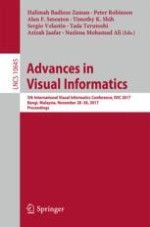2017 | OriginalPaper | Chapter
Reward Conditions Modify Children’s Drawing Behaviour
Authors : Siti Rohkmah Mohd Shukri, Andrew Howes
Published in: Advances in Visual Informatics
Publisher: Springer International Publishing
Activate our intelligent search to find suitable subject content or patents.
Select sections of text to find matching patents with Artificial Intelligence. powered by
Select sections of text to find additional relevant content using AI-assisted search. powered by
